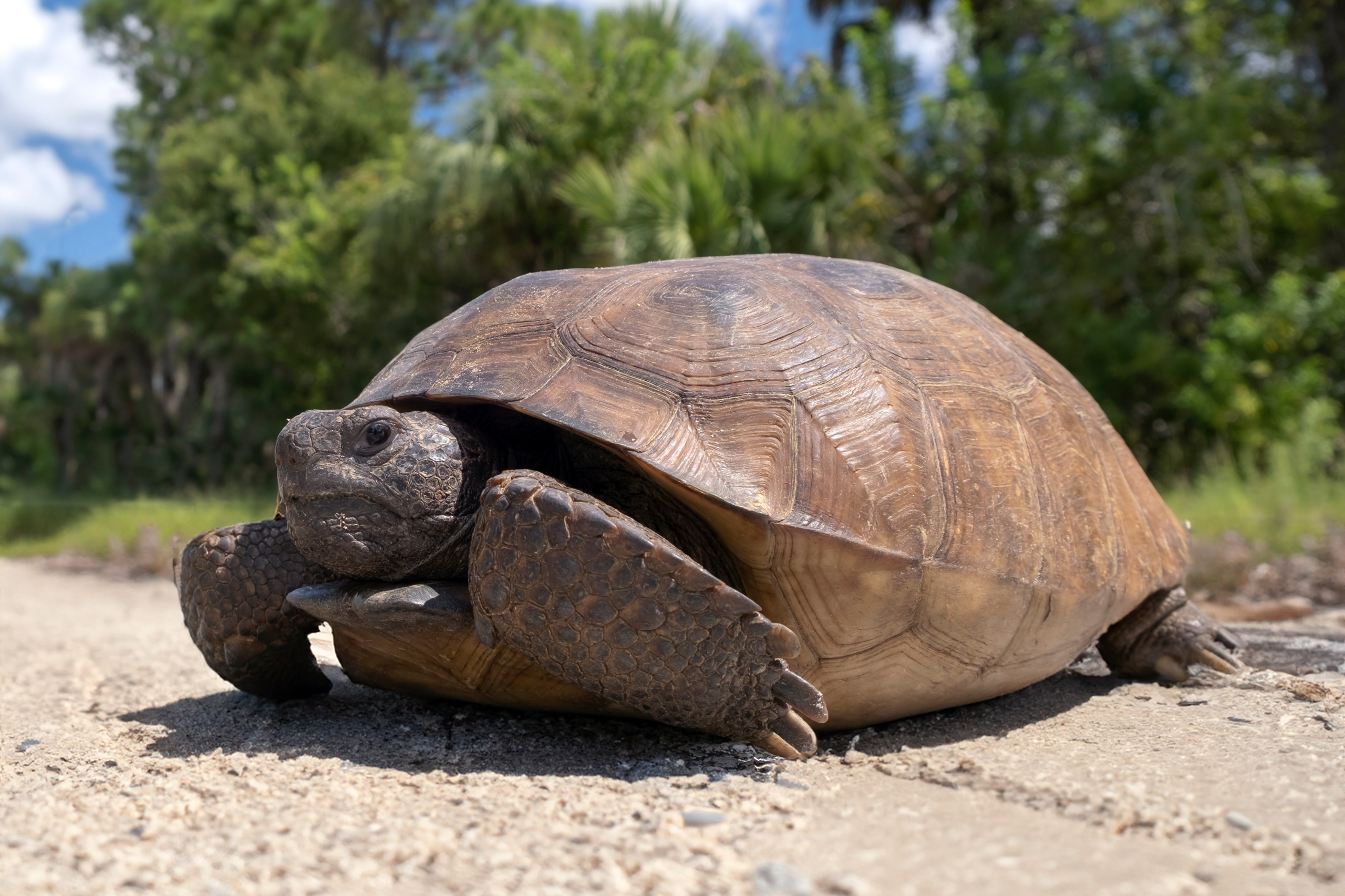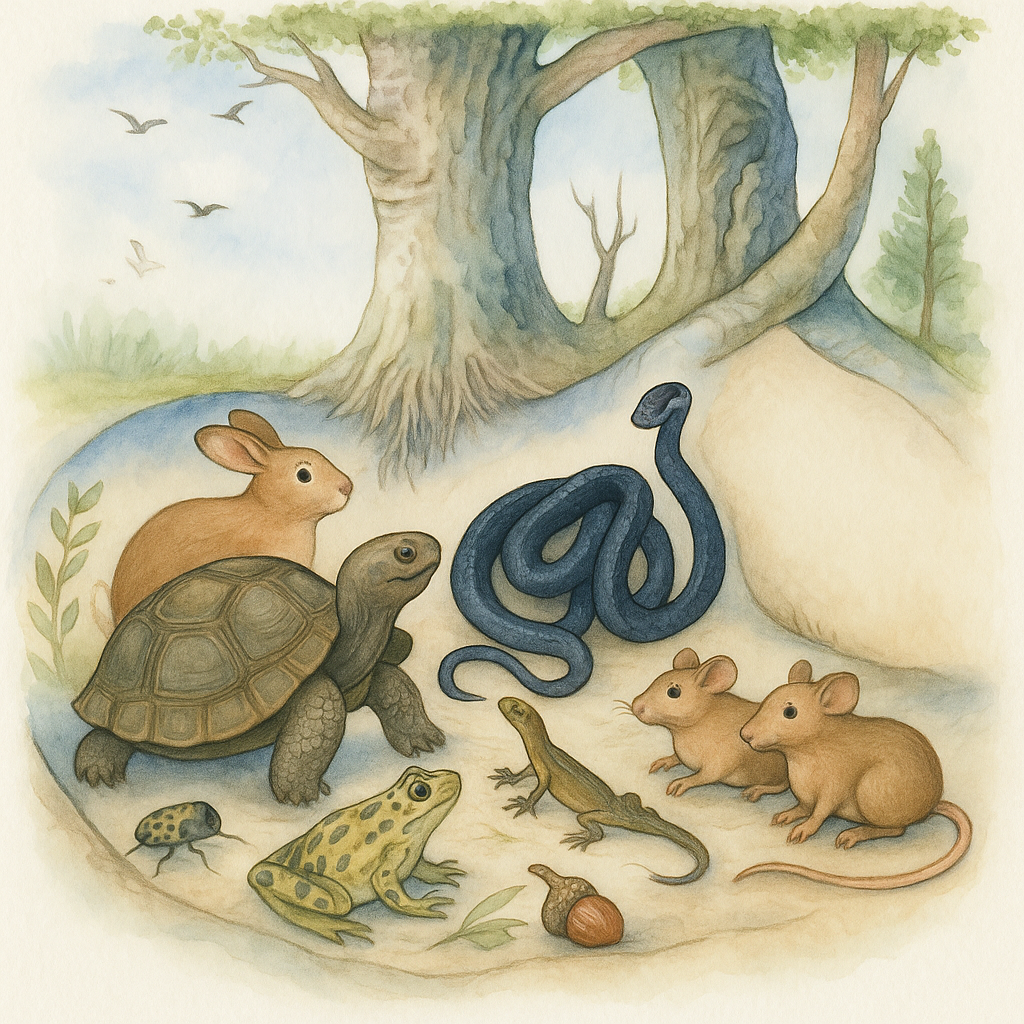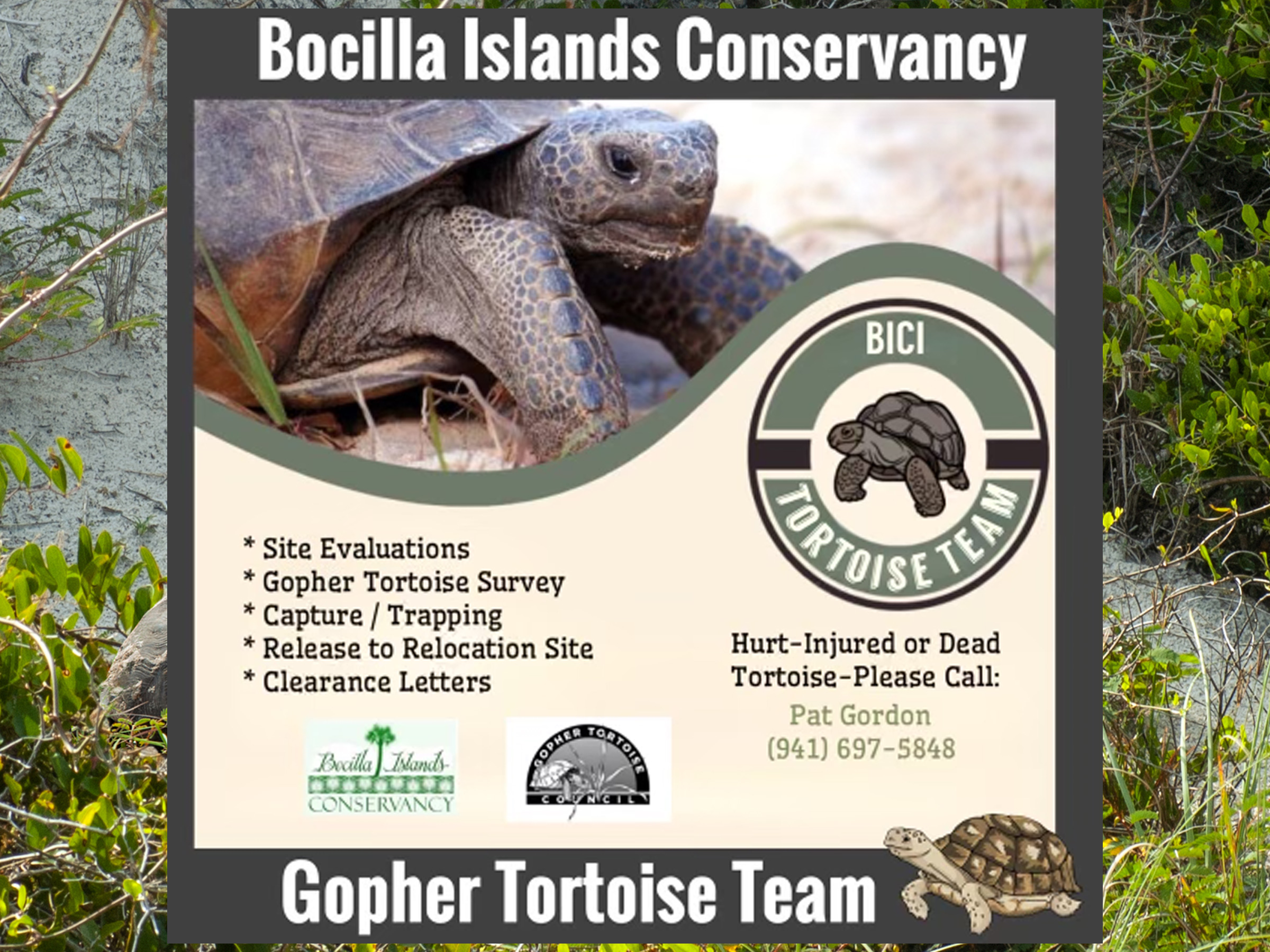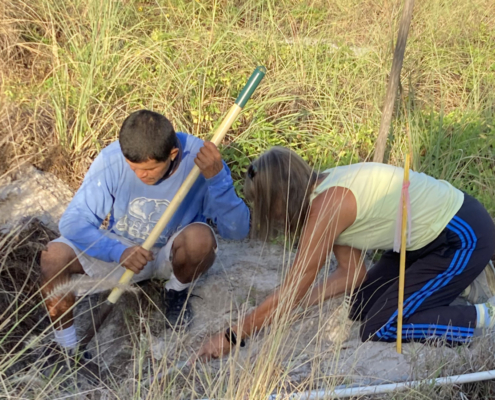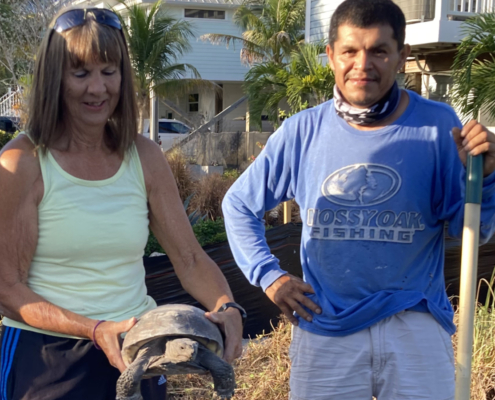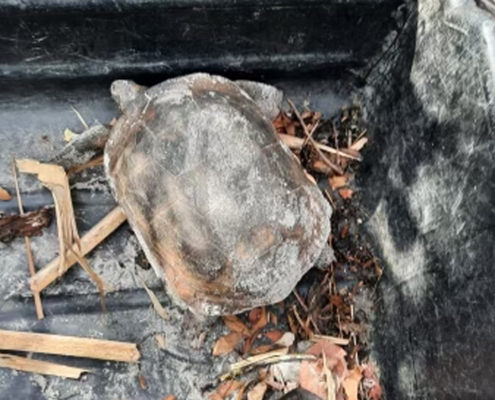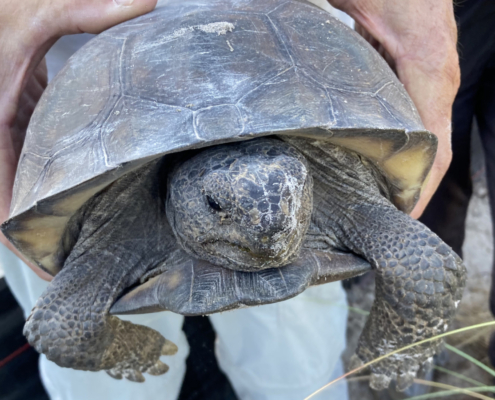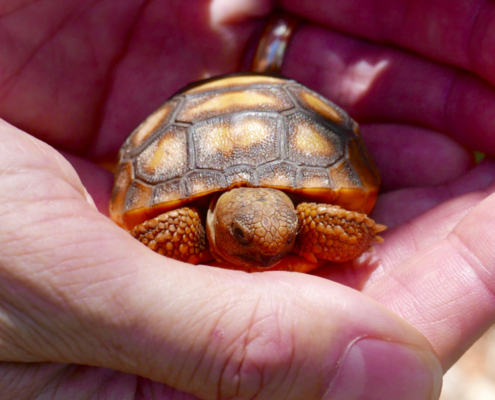Gopher Tortoise Conservation Team
One of the most notable programs led by our conservancy is the Gopher Tortoise Conservation Team (GTCT). This dedicated team responds to calls regarding injured gopher tortoises, mortalities, and excavations, ensuring the protection of their burrows during outdoor events like Art in the Palms. The services provided by the GTCT to island residents are entirely free of charge.
Important Facts About Gopher Tortoises in South Florida
– Protected Species: Gopher tortoises are a protected species in Florida, meaning it is illegal to harm them or disturb their habitats without proper permits. This protection aims to conserve their populations and the essential role they play in the ecosystem.
– Gopher tortoises are true keystone species in Florida’s ecosystem: Their long, deep burrows provide safe shelter for more than 350 other animals — including frogs, snakes, lizards, and rabbits — offering protection from predators, fires, and extreme heat. By digging and sharing their homes, these gentle engineers help countless species survive and keep our upland habitats thriving.
– Reproduction: Gopher tortoises do not begin reproducing until they reach maturity, typically around 12 to 15 years old. This long maturation period significantly affects their population growth.
– Egg Laying: Interestingly, gopher tortoises lay their eggs above ground in a nest dug in the dirt on a sandy mound, rather than inside their burrows. This behavior places their eggs at risk, as they are vulnerable to predators.
– Predators: Various predators, including iguanas and armadillos, are known to eat gopher tortoise eggs, decreasing the chances of successful hatching.
– Threats from Traffic: Gopher tortoises are often at risk from vehicles due to speeding drivers on roads, despite the posted 15 mph speed limits. Additionally, golf carts can pose a threat, resulting in injuries and fatalities.
– Egg Survival: A female gopher tortoise may lay around 5 to 15 eggs in a single nesting season, but only a small percentage of these eggs survive to adulthood due to predation and environmental factors.
Without the gopher tortoise, hundreds of Florida’s creatures would lose their safe haven — proof that one small tortoise can make a big difference for an entire community.
Gopher Tortoise Relocation Program
We are proud to have an esteemed member on our team who is trained and certified as a gopher tortoise relocation specialist. This expertise allows us to offer our services to you free of charge, ensuring that any gopher tortoises on your property are identified and relocated properly without the high costs typically associated with external specialists.
Welcome to our Gopher Tortoise Relocation Program, designed to assist you as you prepare to build on your newly purchased vacant lot. If you discover gopher tortoises on your property, our dedicated Gopher Tortoise Conservation Team (GTCT) is here to help.
Since 2006, we have been authorized by the Florida Fish and Wildlife Conservation Commission (FWC) to manage gopher tortoise relocations, collaborating closely with wildlife biologists. By choosing our program, you not only ensure compliance with local conservation laws but also contribute to the preservation of this vital species.
We encourage you to reach out to us for assistance in your development efforts while safeguarding the gopher tortoises that inhabit our beautiful island. Together, we can make a positive impact on our environment!
Frequently Asked Questions About Gopher Tortoise Agents
Why does FWC use authorized Gopher Tortoise Agents?
The FWC uses authorized gopher tortoise agents to ensure the safety and well-being of gopher tortoises during responsible relocations and to ensure that all state policies, guidelines, and rules are followed during all permitted relocation activities.
When is an authorized go for tortoise agent required?
Use of an authorized gopher tortoise agent is required at
- All off-site relocation projects, regardless of tortoise capture method;
- On-site relocation projects that involve the relocation of more than 10 burrows.
- On-site relocation projects that involve any method of capture other than bucket trapping, live trapping, or hand shovel excavation.
Authorized agent permits are not issued for scientific collecting or research permits.
What do authorize go for tortoise agents do during relocations?
Authorized agents assist with many activities during responsible relocation projects, including surveying, trapping, marking, transporting, and relocating or gopher tortoises. Each agent permit will clearly state what the agent is permitted to do and will be conditioned accordingly.
What are the requirements to become an authorized go for tortoise agent?
Authorized agents must be able to accurately represent and follow FWC policies, guidelines, and rules with the public and with their clients. Please refer to the FWC’s Gopher Tortoise Permitting Guidelines for specifics on the experience and training required to qualify for an authorized gopher tortoise agent permit.
In lieu of experience, successful completion of an FWC approved course by Kleinfelder, Wildlands Conservation, and Common Ground Ecology will be accepted (for up to 2 years following course completion) for purposes of meeting the requirements for the Authorized Gopher Tortoise Agent permit. Individuals can choose to be trained and permitted for as few or as many associated activities as they wish.
How do I apply for an authorized go for tortoise agent permit?
If you are interested in applying to become an authorized gopher tortoise agent, please visit the FWC gopher tortoise online permitting site. A username and password is required. Please refer to the authorized gopher tortoise agent permit application checklist for a list of items needed to complete the online application process.
How long are authorized go for tortoise agent permits valid for?
Authorized agent permits issued or renewed are valid for four years. The permit expiration date is listed on the agent permit in the upper right corner on the first page of the permit.


